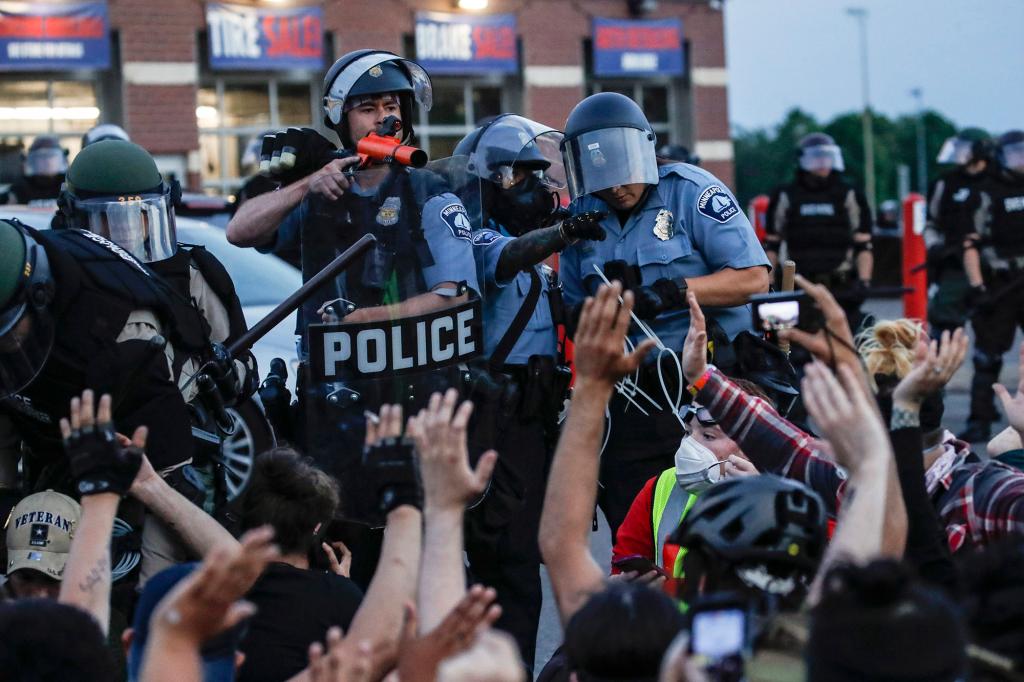“Make no mistake, violent crime was up under Donald Trump,” Minnesota Gov. Tim Walz warned in his first speech as Kamala Harris’ running mate.
“If you look this up at home,” Transportation Secretary Pete Buttigieg claimed last month, “you will know that crime went down under Biden and crime went up under Trump. Why would America want to go back to the higher crime we experienced under Donald Trump?”
But the opposite is true: Between 2016 and 2020, violent crime fell by 17% under Trump — and soared by 43% under Biden from 2021 to 2022.
Of course, news outlets routinely assert that Americans are mistaken in believing that violent crime is rising.
On Monday, Axios had a typical headline: “New data shows violent crime dropping sharply in major U.S. cities.”
Or from NPR earlier this year: “Violent crime is dropping fast in the US — even if Americans don’t believe it.”
But Democrats and the media don’t understand the difference between the number of crimes reported to police and the total number of crimes.
There are two measures of crime: One, the FBI’s NIBRS, counts the number of crimes reported to police yearly.
The other, the Bureau of Justice Statistics’ National Crime Victimization Survey, asks about 240,000 people each year whether they have been victims of crime, in an attempt to measure both reported and unreported crimes.
Since 2020, these two measures have been highly negatively correlated: The FBI has been finding fewer instances of crime, but people are simultaneously answering in greater numbers that they have been victims.
We know that crime victims report only about 40% of violent crimes and 30% of property crimes to police.
Prior to 2020, the FBI and NCVS numbers generally moved together.
But every year from 2020 onward, these figures have moved in opposite directions.
For instance, in 2022, the FBI reported a 2.1% drop in violent crime, but the NCVS showed an alarming increase of 42.4% — the largest one-year percentage increase in violent crime ever reported by that measure.
Part of the reason is that law enforcement in the United States has collapsed.
Take, for example, cities like New York with more than 1 million people.
The FBI data shows arrest rates for reported violent crime in such cities plunged by more than half, from 44% in the five years before the COVID pandemic to just 20% by 2022 — the largest drop ever.
But that’s because criminals since 2020 face a declining risk of arrest when committing crime.
In 2022, in cities with more than a million people, only 8% of all violent crimes (reported and unreported) and 1% of all property crimes resulted in an arrest — and of course, not all those arrests resulted in charges, let alone prosecutions or convictions.
“It has gotten to the point where people aren’t even bothering reporting crime because they don’t think anything is going to happen,” Elon Musk correctly noted in his Monday night discussion with former President Trump.
Police departments have lost many effective officers through retirements since the pandemic. Some police forces are demoralized because the criminals they arrest are immediately released.
Compounding the problem is that fewer than half of all police departments are providing complete crime data to the FBI since its reporting system changed in 2021.
So it isn’t surprising that reported and total crime rates are moving in opposite directions — but shockingly, the NCVS measure of reported crime has been moving in the opposite direction of the FBI’s measure since 2020.
One reason for this gap may be a reduced number of police officers due to budget cuts and retirements. In some places, police have stopped responding to non-emergency 911 calls, forcing victims to travel to the police station to report a crime.
Calling 911 isn’t enough — a crime only officially counts in the FBI’s data if police have made out a report.
Some critics focus on the change in the murder rate over the past few years to claim that the publicly perceived rise in crime is a mirage.
Murder rates did drop by 13% in 2023, although the preliminary 2023 murder rate is still 7% above 2019 levels.
But the FBI’s murder rate data may be faulty, too: The Centers for Disease Control’s measure doesn’t match up with the FBI’s.
While the FBI shows murder peaking in 2020 and dropping in both 2021 and 2022, the CDC shows it peaking in 2021 — and remaining high in 2022, higher than in 2020.
We know that victims don’t report most crimes to the police.
So it makes no sense to rely on the FBI’s limited data — unless the goal is to soft-pedal America’s crime problem.
John R. Lott Jr. is president of the Crime Prevention Research Center.
